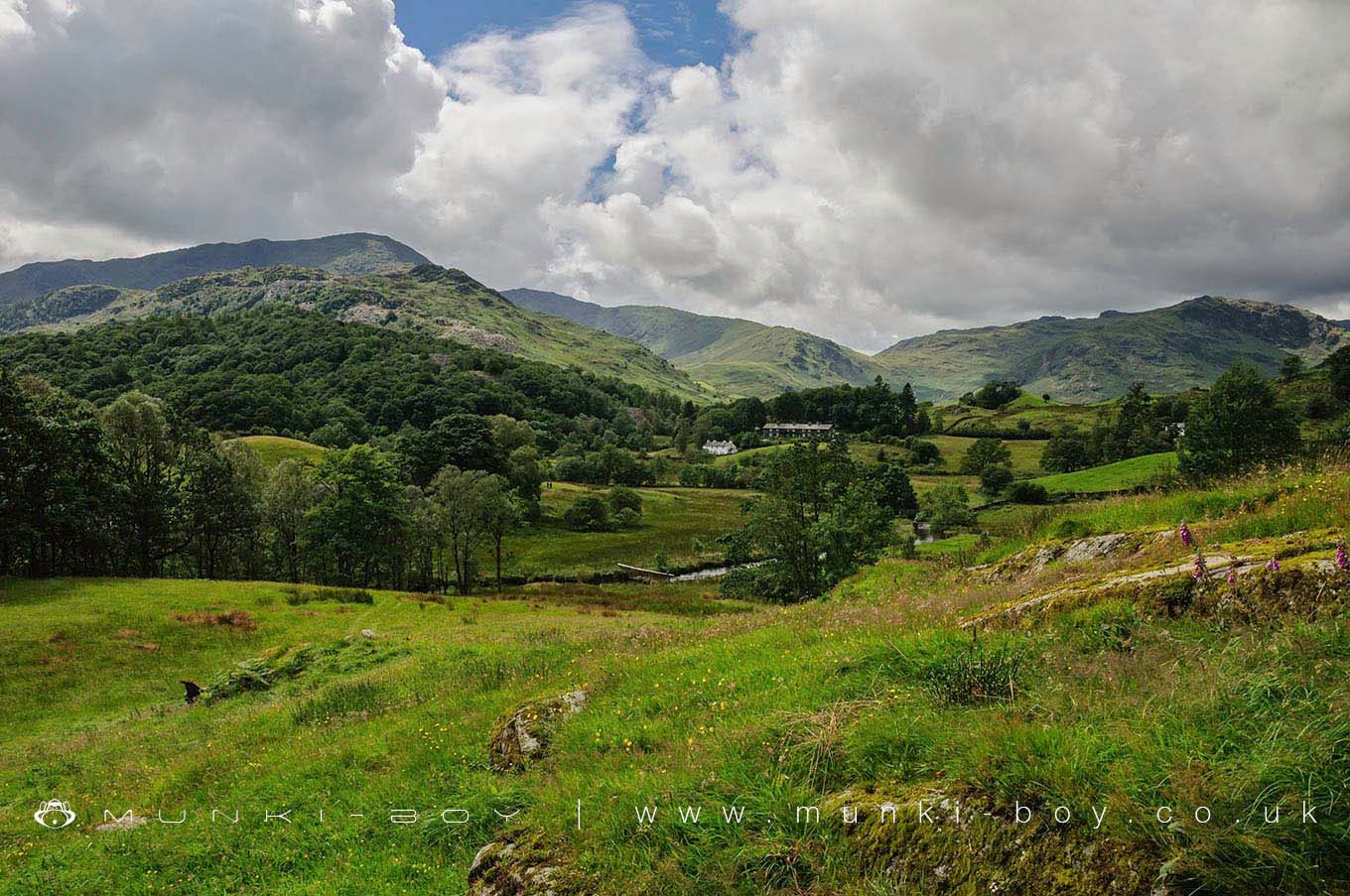
Little Langdale by munki-boy
Little Langdale
Little Langdale is in The Lake District National Park in England.
Little Langdale is a valley in the Lake District in England.
The Little Langdale hamlet consists of a few scattered stone houses and an Inn, along with Little Langdale Tarn. Little Langdale is separated by the Lingmoor Fells from Great Langdale.
Little Langdale’s Inn, The Three Shires Inn, was built in 1872. It is named after the Three Shires Stone, about two miles away, marking where the boundaries of the old counties of Cumberland, Westmorland and Lancashire met.
Blea Tarn is in a valley between Little Langdale and Great Langdale. Little Langdale valley descends to join with Great Langdale above Elterwater.
Langdale was previously known as Langdene meaning ‘far away wooded valley’, referring to its distance along the flint route from Whitley Bay.
Historically Little Langdale Village was the major intersection of all the old pack horse routes. With old roads coming from Ravenglass, Whitehaven, Keswick, Penrith, Carlisle, Ambleside, Hawkshead, Coniston, Ulverston, Broughton in Furness and Barrow in Furness.
One of these routes is the 16th century, former packhorse bridge, Slater’s Bridge, which crosses the River Brathay in three spans supported by a large boulder mid-stream and stone causeways.
Today roads from Little Langdale lead to the west over Wrynose Pass and Hardknott towards Eskdale. Roads go northwest by Blea Tarn to Great Langdale, northeast to Elterwater and east to the Skelwith Bridge.
The River Brathay runs down the centre of the valley from Little Langdale Tarn, via Colwith Force, to Elterwater. It forms part of the boundary between the historic counties of Lancashire and Westmorland.
Little Langdale Tarn is near the foot of Wrynose pass. The tarn is on private land, which has no public access. It can be seen from the road, the bridleway running along the south side of the valley and from up on the Wrynose Pass to the west.
A short walk from Little Langdale Village, across Slater Bridge, is the famous Cathedral Quarries, a set of disused inter-linked quarries for green slate. Other mine workings in the area include the extensive slate quarries at Hodge Close, Tilberthwaite and the mines on the southern slopes of Wetherlam. A nearby mine at Hawk Rigg possibly dates from the Elizabethan era.
Created: 27 November 2016 Edited: 29 November 2023









